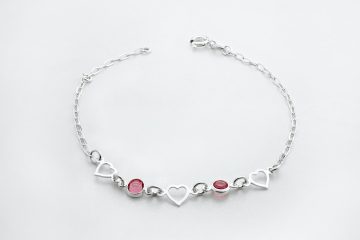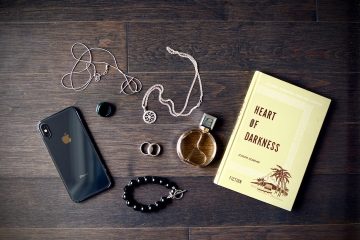*Note: The following article aims to provide a comprehensive guide on understanding the average bracelet size for women. It takes into account various factors that affect bracelet sizing and offers insights into how to measure and find the perfect fit. Please keep in mind that bracelet sizing may vary across different regions and cultures.*
Introduction
Bracelets are a timeless accessory that can add a touch of elegance and style to any outfit. However, finding the perfect fit can be a daunting task, especially when considering the wide range of wrist sizes and bracelet styles available. Whether you’re shopping for yourself or someone else, understanding the average bracelet size for women is essential to ensure a comfortable and well-fitting piece of jewelry. In this article, we will delve into the world of bracelet sizing, exploring considerations such as wrist measurement techniques, popular bracelet styles, and tips for finding the ideal fit.
1. Why Bracelet Size Matters
Choosing the right bracelet size is crucial for both comfort and aesthetics. A bracelet that is too tight can be uncomfortable and restrict movement, while one that is too loose may slip off easily or become a hindrance. By understanding the average bracelet size for women, you can confidently select a piece that fits well and complements your style.
2. Measuring Wrist Size
Before diving into the average bracelet sizes, it’s important to know how to measure your wrist accurately. To measure your wrist size, you will need a flexible measuring tape or a piece of string and a ruler. Wrap the measuring tape or string around the thinnest part of your wrist, just above the bone. Make sure it is snug but not too tight. Read the measurement or mark the string, and record the size in inches or centimeters.
3. Common Bracelet Styles and Their Sizing
Different bracelet styles require different measurements. Let’s explore the most common types of bracelets and their average sizes for women.
a) Chain Bracelets
Chain bracelets are a classic and versatile choice that can be worn on their own or layered with other pieces. They typically come in standard sizes ranging from 6.5 to 7.5 inches (16.5 to 19 cm). However, some designs may have adjustable clasps or additional links to accommodate various wrist sizes.
b) Bangle Bracelets
Bangle bracelets are rigid and usually slip-on or have a hinged opening. The average sizes for bangles vary, but they typically range from 7 to 8 inches (17.8 to 20.3 cm) in circumference. It’s important to note that bangles should fit comfortably over the widest part of your hand while still being snug around your wrist.
c) Cuff Bracelets
Cuff bracelets are wider and open-ended, allowing for adjustable sizing. They can be gently squeezed or stretched to fit comfortably on the wrist. The average cuff bracelet size for women is around 6 to 7 inches (15.2 to 17.8 cm) in circumference.
d) Beaded Bracelets
Beaded bracelets often feature elastic cords or adjustable closures. These bracelets can be customized to fit various wrist sizes. However, the average size for beaded bracelets is approximately 7 inches (17.8 cm) in length.
4. Factors Affecting Bracelet Size
While average sizes provide a good starting point, it’s essential to consider various factors that can affect the fit of a bracelet.
a) Body Type
Body type can influence wrist size, and individuals with smaller frames may have slimmer wrists compared to those with larger frames. It’s important to take this into account when determining the average bracelet size for women.
b) Personal Preference
Some individuals prefer a looser or tighter fit when it comes to bracelets. Personal preference plays a significant role in finding the perfect fit. Consider whether you prefer a snug fit or something with a bit more movement.
c) Bracelet Width
The width of the bracelet can also affect sizing. Wider bracelets will need to be larger in circumference to fit comfortably, while narrower ones can be slightly smaller.
d) Clasp and Closure Types
The type of clasp or closure on a bracelet can impact sizing. Certain clasps may require additional length to fasten properly, so it’s important to consider this when selecting a bracelet.
5. Tips for Finding the Perfect Fit
Finding the perfect fit for your bracelet can be simplified with these helpful tips:
a) Try Before You Buy
Whenever possible, try on bracelets before making a purchase. This will give you a better idea of how the bracelet fits and feels on your wrist.
b) Consider Your Lifestyle
Think about your lifestyle and how you plan to wear your bracelet. If you lead an active lifestyle, a looser fit may be more comfortable for activities, while a tighter fit may be suitable for more formal occasions.
c) Consult with a Jeweler
If you’re unsure about the average bracelet size for women or need assistance in finding the perfect fit, consult with a professional jeweler. They can provide guidance based on their expertise and help you make an informed decision.
d) Adjustable Bracelets
Consider adjustable bracelets that can accommodate various wrist sizes. These can be a practical choice if you’re uncertain about the size or intend to gift the bracelet to someone else.
e) Consider Resizing
If you have a bracelet that doesn’t fit quite right, many jewelers offer resizing services. This can be an excellent option if you already own a special bracelet that you’d like to wear but needs adjustment.
Conclusion
Finding the perfect bracelet size can greatly enhance your overall jewelry-wearing experience. By measuring your wrist accurately and considering various factors such as bracelet styles, body type, and personal preference, you can confidently select a bracelet that fits well and suits your unique style. Remember, the average bracelet size for women can serve as a starting point, but it’s important to consider individual factors and try on bracelets before making a purchase. With these insights and tips, you’ll be well-equipped to find the ideal fit and proudly wear your bracelet with confidence.
FAQs
1. Can I use a regular tape measure to measure my wrist size?
Yes, a regular tape measure can be used to measure your wrist size. However, it’s essential to ensure it is flexible enough to wrap comfortably around your wrist.
2. Are there standardized bracelet sizes for women across different countries?
Bracelet sizes can vary across different countries and regions. It’s advisable to consult a local jeweler or refer to size charts provided by reputable jewelry brands.
3. Can I wear multiple bracelets of different sizes together?
Yes, wearing multiple bracelets of different sizes can create a stylish and layered look. Experiment with different sizes and styles to create a unique combination that suits your personal taste.
4. Can I adjust the size of a bracelet myself?
Adjusting the size of a bracelet yourself can be challenging, especially if it requires cutting or altering the structure. It’s best to consult a professional jeweler to ensure the bracelet remains intact and maintains its original design.
5. How can I clean and maintain my bracelets?
Cleaning and maintenance methods may vary depending on the materials used in your bracelets. It’s recommended to follow the care instructions provided by the jeweler or manufacturer to ensure your bracelets stay in excellent condition.




